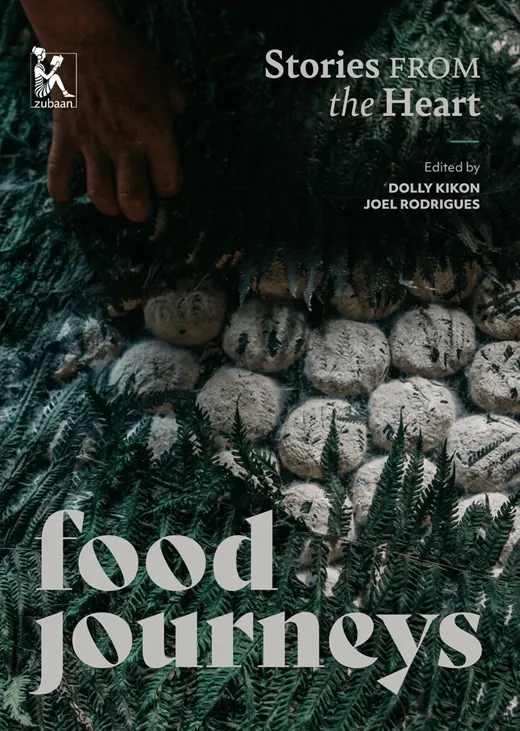[ By Sayan Deori ]
Food is an integral part of life, living, and human societies. I can safely assume that all of us have tried our hands at cooking, eating, sharing food in our lives, and engaging ourselves in commensality activities. There is no dearth of literature around food cultures, including recipe books, personal blogs, travel diaries, and, not to forget, nutrition and diet prescriptions for a healthy lifestyle. Lately, we have also seen a rise in academic scholarships surrounding food cultures and food studies in different disciplines.
If we particularly look at Northeast Indian food culture, we can see that the food literature is mostly through personal blogs and social media content (Instagram and YouTube). If one has to go through them, it somewhat gives the impression that the people of the region have a uniform flavor palate, lacking diversity, and primarily indulging in meat (particularly pork), rice beer, and bamboo shoots. The overt simplification of Northeast cuisines through narratives like ‘simple food’ (referring to the use of fewer or minimal spices),’simple cooking techniques’ (such as using less oil and boiling food), and the constant use of ‘organic food’ on every occasion is tied with a hint of romanticism.
“Food Journeys: Stories FROM the Heart,” through an anthology of essays, challenges these narratives and offers a fresh perspective on food writing through personal essays (both text and photo essays), deeply embedded in the socio-political everydayness of the region and its communities. Food is political, and this volume encapsulates and shows us the social and political nature of food and how the simple act of cooking and eating can be a form of resistance. “Food Journeys: Stories FROM the Heart” is an editorial volume brought out by Dolly Kikon, an anthropologist and professor at the University of Melbourne, and Joel Rodrigues, a researcher and currently a PhD candidate at the University of Stockholm. It is published by Zubaan (2023). The 343-page book has twenty-two essays by twenty-five contributors who are authors, academicians, independent researchers, practitioners, photographers, and artists, mostly from the eight states of North East India. The book carries a cover image of yeasts cakes being dried, a process before preparing millet beers, which I feel really resonates with the theme of the book, as yeasts signifies starter cultures for fermentation that is widely practiced in the region.
Some things cooking (Dolly and Joel’s motivation)
Dolly and Joel stir the conversation and set the tone by asking straightforwardly, “Is there such a thing as ‘northeast food’? Why?” This brings in the always-produced and reproduced debate of India and the Northeast, as well as the crux of the center-periphery discourse and conversations. They have laid out in the forthcoming pages their motivation for bringing out a volume around experiences surrounding Northeastern food, explaining why these stories are important and how existing literature does not produce a true picture and culture of the food experiences people go through in Northeast India.
Each chapter also has a personal recipe (or recipes) shared by the author either between or at the end of their chapter, supplemented with pictures and the meanings they associate with the particular recipe. The stories shift our focus beyond the gastronomic aspect of food and the four walls of the kitchen and dining room. It engages the reader by evoking a cauldron of emotions, questions, and reflections.
The Chapters
All the chapters in the book follow a firsthand account of the author and their experiences and negotiations with their immediate community, society and systems at large through the lens of food. They pose pressing questions and illustrate the social and political world of Northeast India. The book deals with topics such as intimacy, community, racism, militarized geographies, AFSPA, trans border solidarity, migration, precarity, and many others that are embedded within the essays. In this review, and in no particular order, I would like to mention a few essays from the book that I enjoyed reading, rather than providing individual reviews of all the essays.
For instance, the first chapter is titled “Writing My First Book on Northeast India” by Hoinu Hauzel, a senior journalist from Manipur. In her essay, Hoinu reflects on what it took to write the first cookbook for or from Northeast India. She details the conceptual seeding, finding publishers, and actually researching and writing the cookbook around twenty-five years ago. It fits quite well as an opening chapter to delve into the culinary universe of the region. At the end of her essay, she gives a recipe for Galho with vegetables (her version).
“Civilizing the Tastebuds” an essay by Techi Nimi, an anthropology research scholar from Arunachal Pradesh, shares her experience of feeling ‘otherness’ and the shyness she felt toward tribal food while growing up. She touches on a range of issues from Arunachal Pradesh, recounting her story of feeling discriminated against, experiencing otherness, anxiety, and fear only because of her tribal food habits, which paints an imagery that is still pronounced in current times, unfortunately. I particularly liked her Yumtar (smoked meat with chilies and spices) stories from her boarding school days, as she unravels how certain institutions propagate exclusion and peddle their agenda through education projects and ‘civilizing the tribals.’ The story also transported me to my hostel days in Jawahar Navodaya Vidyalaya (JNV), Yachuli in Lower Subansiri district, where my Arunachalee friends would bring beef yumtar and yarmu in Horlicks jars. We would eat it in our dorm rooms discreetly. However, the reason for our discreetness was mostly to hide from our seniors to avoid ‘hamla’ (to avoid sharing), unlike Techi’s fear of getting caught and outcast in a vegetarian school in a tribal state.
Another essay titled “In Her Absence, Stolen Moments with Chicken” by Babina Chabungbam takes us through a journey of taste, cravings, and ‘forbidden food’. She is a classical dancer from Manipur and a scholar who reflects on her growing-up days in an orthodox Vaishnavite household in Imphal. In her essay, she recalls her days of performing Jagoi Raas, a devotional dance for Krishna. She writes about her dietary restrictions and her moments of eating meat, juxtaposing them with the larger social culture of Manipur. She touches on the concepts of purity and performances in Vaishnavite households in Manipur, questioning and critiquing this structure through her article. Babina’s essay engages the reader in liminal spaces of becoming and unbecoming through dance, performances, and eating.
In her essay “Hills, Plains, and the World: A Life in Meals and Morsels”, Janice Pariat shares and talks about her experiences, from small towns in Assam to cities like Delhi and London, narrating a complex tale of longing, homecoming, and belonging through her food. She weaves in pieces and stories of people who have fed her, and in doing so; she also delves into the history of the region, the towns she stayed in, and the communities that reside in them. She intricately tells tales of migration, wars, higher education, fondness for home, and finding home away from home. And as ever, it is always a pleasure reading her writing. Also, not to miss her recipe of porridge made from overnight-soaked oats.
In Him Kumar’s essay titled “Amoi and her Millet”, he explains Nepali food culture from Assam. He takes the reader to the times when his family used to cultivate millets and how the practice perished with time. I found his essay critiquing the monoculture trend evident in the agriculture practices of Assam, which were illustrated through his grandmother’s millets. He ruminates on some of the pivotal points that changed the course of local agricultural and farming practices. He highlights institutions and policies that encourage cash farming and the introduction of new crops into the landscape, which leads to a shift in eating and farming. Personally, I found his essay engages the reader with questions of indigeneity in food systems, food diversity, and local food wisdom. His essay also prompts reflection on the frameworks of development in the agricultural sector in the small towns and villages of Assam and the Northeast. It touches on the discourse of food security and food sovereignty, the control of food production among farmers, and the factors enabling the shift in consumption and production.
In between these essays, there are also photo essays, which are quite thought-provoking. A photo essay titled “Millet Brews for Creators and Communities” by Kunga Tashi Lepcha and Praveen Chhetri showcases the world of traditional millet beer and its cultural significance among the indigenous communities of the Eastern Himalayas.
Another photo story titled “Taste from an Unruly City: A very Shillong Story in Photos” by Tarun Bhartiya provides a critique of the existing rules and systems in the cities in context to everyday workers. The essay highlights the precarity of street vendors in the city of Shillong.
Food for thought
As clichéd as it may sound, stories have this immense power to engage, reflect, heal, and knit solidarity. I would like to believe this book does the same by creating empathy through its diverse stories among the readers. It opens a new window to understanding the Northeast, including the landscape, infrastructures, trans-boundary relationships, evolving palates, and institutions. And if I may, as concluding thoughts, this work is like a multi-course feast serving a buffet of stories from the region, which can be savoured at its own pace and enjoyed. (Sayan Deori is a doctoral researcher in the Department of Social Work at Tezpur University. His areas of interest are Community nutrition, Indigenous Food systems, Ecology and Food Sovereignty in northeast India)



